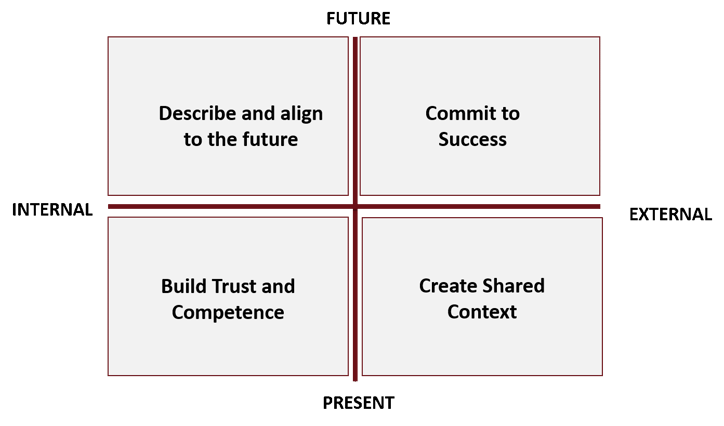As all great (and unfortunately not-so-great) leaders know, there are many complex and difficult aspects to leading a business in times of change. Based on years of experience working with some of the best leader in the world and observing how large global organizations really work, I developed this Business Leadership Framework for an engagement that I recently used as part of a leadership workshop to develop enhanced business leadership skills during times of disruptive change. The focus of this Business Leadership workshop was enhanced communication skills and we utilized one of our newest business simulation platforms to provide participants with the opportunity to immediately apply new skills and learn-by-doing.
aspects to leading a business in times of change. Based on years of experience working with some of the best leader in the world and observing how large global organizations really work, I developed this Business Leadership Framework for an engagement that I recently used as part of a leadership workshop to develop enhanced business leadership skills during times of disruptive change. The focus of this Business Leadership workshop was enhanced communication skills and we utilized one of our newest business simulation platforms to provide participants with the opportunity to immediately apply new skills and learn-by-doing.
The framework presents two distinct axes for beginning your authentic communications strategy;
- Internal vs. External communications
- Present vs. Future Communications
I will describe and provide commentary on each of the four quadrants in this blog post that can be used for immediate application.

Internal – Present: Build Trust and Competence
In the authentic communications quadrant that is focused on the internal and present, the primary objective is build trust and competence of your team and the people you work with. You build this trust and competence by being authentic and not “overselling” or over-promising something that can’t be delivered or achieved. A great tool to help you do this is to simply acknowledge the reality of the way the world is at that moment. Be real and deal with the volatility the best way you can but remember, they are always watching what you do and more importantly how you say it.
External – Present: Create a Shared Context
In the external and present quadrant, the best leadership practice is to create a shared context for everyone to rally around. For example, if customers are demanding higher quality, more service, and lowering of your prices which we know can’t be sustained in the long-term. However, as a leader trying to deal with the volatility of the market, you can create a shared context for finding operational efficiencies that improves quality, lowers costs of production, and can also be reflected in lower process to customers. That shared context must be authentic and tied to the business results to work.
Internal – Future: Describe and Align the Future
In the internal and future quadrant, the best leadership practice is describing and aligning the future. I feel very strongly that this one is all about managing realistic and authentic expectations of the future but with a small dose of innovation and imagination. For example, we can see of future where robots and machine learning are creating products faster, cheaper, and better than humans can today. That doesn’t, however, mean that people aren’t needed; quite the contrary. People are needed to program them, teach them, and consume the products they are making. Leaders in this future will need to use authenticity skills to describe this future and why it’s going to be good for the employees.
External – Future: Commit to Success
The final quadrant is the external future. Here, leaders must use their skills and tools to have people commit to success even though success may be somewhat difficult to define. The leader of the near future will have to develop and refine skills that us authenticity to confidently describe a future and then get direct and indirect reports to believe the vision and commit to doing whatever it takes to get the job done and to achieve the goals and objectives.
In summary, as I shared upfront, business leadership is only going to get more complex and harder to execute. Hopefully, this framework and the four quadrants can provide some additional ideas and insights to help you bridge the gaps.




